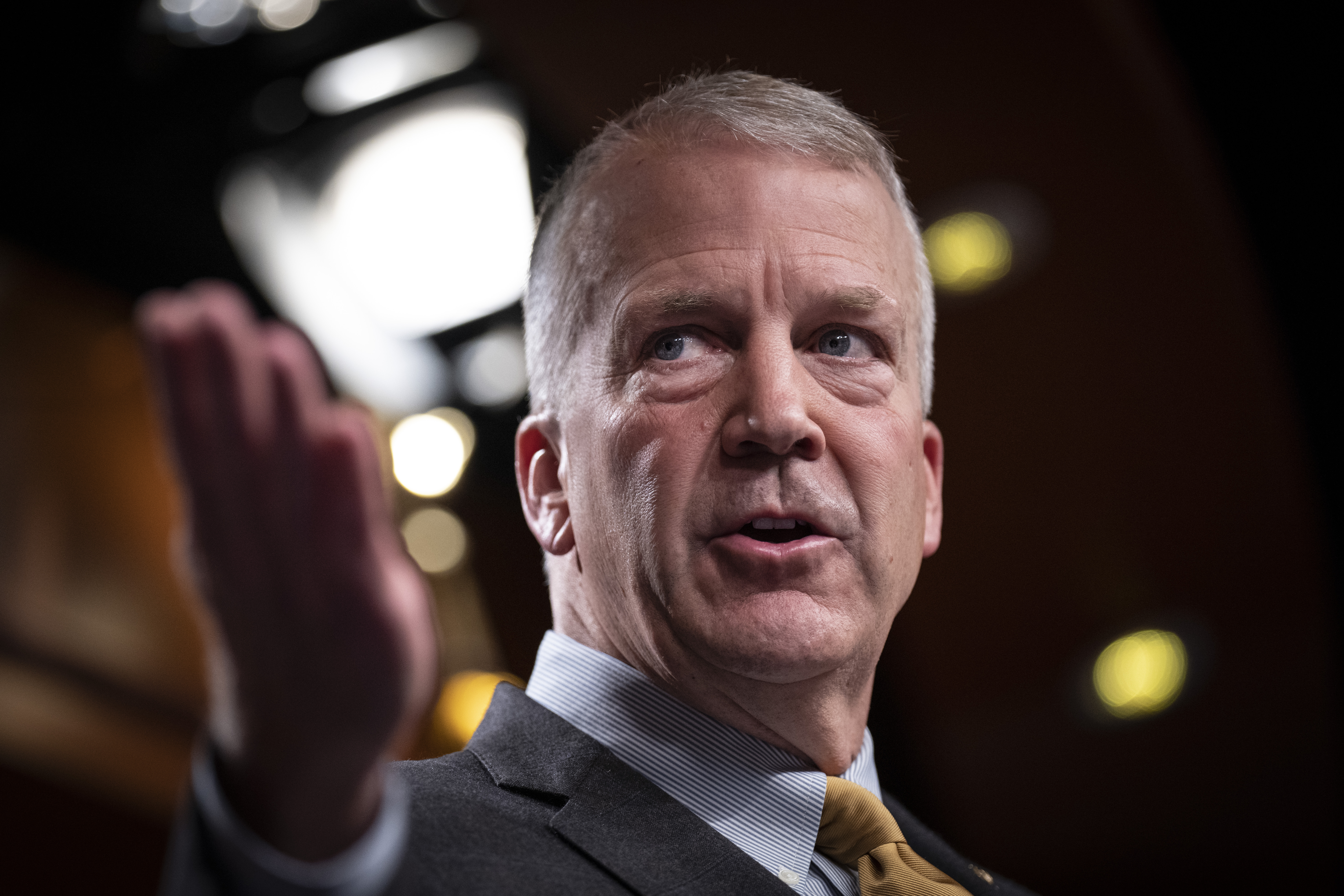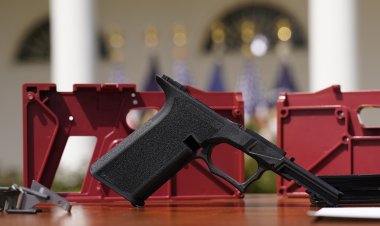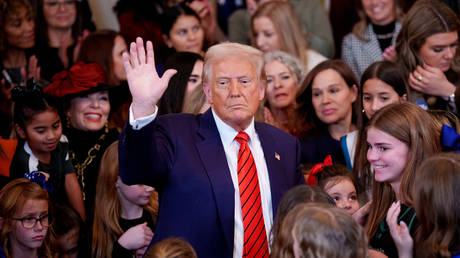Lawmakers seize on spy balloon to inflate defense spending
Lobbyists, meanwhile, are pitching new radars and other homeland defense systems to the Pentagon and Congress.


Defense hawks in Congress cite many reasons to keep money flowing to the Pentagon: enemy fleets, hypersonic missiles, nuclear threats.
Now they have a new one, and it was shot down over the Atlantic Ocean on Feb. 4.
Lawmakers and lobbyists are pouncing on a Chinese spy balloon’s seven-day incursion over North America this month to push back against possible defense budget cuts — and make the case for even more funding — as Congress grapples with the growing threat from Beijing and doubts about the military’s ability to detect similar objects.
"I don't think there's one U.S. senator who has been going to these briefings that thinks that the message out of this is less defense spending,” said Sen. Dan Sullivan (R-Alaska). His state has been at the center of two of the recent flights.
Some advocates for reining in spending already see hawks leveraging the incident for a bigger Pentagon budget.
"Every emergency is an excuse for more money," said Sen. Rand Paul (R-Ky.), who has argued Republicans should "give up the sacred cow" of never trimming military spending.
"If we spend $850 billion and can't defend against a balloon, do you think we really could spend $900 billion, and we could get the balloons?" Paul said.
With the specter of cuts hanging over the coming budget season, top GOP military boosters on Capitol Hill are already warning they won't vote for reductions to the Pentagon. They plan to use upcoming military posture hearings to outline the wide array of threats the U.S. faces as a case for more, not less, money.
That's likely to include tough questions for the four-star general overseeing the protection of domestic airspace about potential shortcomings in how the military track objects near or over the U.S. Lawmakers are already eyeing more funding to enhance and quickly field those capabilities.
The Chinese spy balloon stoked bipartisan uproar both at Beijing and at the Biden administration's decision to wait to shoot it down.
The incursions come as Congress debates military spending hikes after securing two straight increases to President Joe Biden's defense budgets. This fiscal year, lawmakers ladled on an extra $45 billion to the administration’s Pentagon plans, cementing a 10 percent increase to the defense budget.
But the path forward for defense spending could be rocky. House Republicans, led by Speaker Kevin McCarthy, want to cut discretionary spending as part of a deal to lift the federal borrowing limit in the coming months. But the GOP is divided over whether the Pentagon should be spared from the chopping block.
Defense boosters are out in force, arguing that deterring China requires more money. Now, the surveillance balloon — as well as revelations that at least three other Chinese balloons flew over U.S. territory and went undetected in the last administration — is fueling those calls to safeguard the national security budget. Lawmakers argue that the incident showcased the need to upgrade the Pentagon’s homeland defense systems.
"This situation is a pretty stark reminder that we're vulnerable and that China is aggressive. That's just talking about the one balloon,” said Sen. Kevin Cramer (R-N.D.). “It'd be a hard time to convince me we should be cutting anything in the defense budget.”
The top Republican on the Senate Armed Services Committee, Sen. Roger Wicker of Mississippi, added that cutting the defense budget after a hefty increase “would be exceedingly unwise.”
Lobbyists agree that it will be difficult for Congress to cut the defense budget while the Chinese spy balloon is dominating the news cycle. POLITICO spoke with four lobbyists who were granted anonymity to speak freely on the Pentagon’s evolving budget request.
“It was already going to be hard [but] this definitely makes it harder,” one lobbyist said, referring to cutting defense spending.
The Chinese spy balloon is making the case for a renewed interest in homeland defense, a second lobbyist said.
Many lobbyists are seizing the opportunity by pitching new radars and other homeland defense systems to Pentagon officials and members on Capitol Hill.
But a clash between Biden and House Republicans over whether to pair spending reductions with an increase in the debt limit will weigh heavily on Pentagon spending plans in the coming months. A similar fight in 2011 yielded a decade of caps on defense and domestic spending. And not everyone in Washington agrees that the Pentagon budget must be spared.
A similar deal that slows Pentagon growth, if not outright cutting it, is the most practical way to rein in defense spending, said Andrew Lautz, director of federal policy for the National Taxpayers Union. That deal was reviled by defense hawks, and Lautz warned of "threat inflation" — using the spy balloon provocation and others to justify a larger budget.
"Whatever is in the news that defense hawks can link onto to make the public case for defense increases, they will use," Lautz said.
Another GOP advocate for reining in the Pentagon budget, Sen. Mike Braun of Indiana, said lawmakers using China’s high-altitude incursions to justify spending more on the military would be “a false argument."
"If they do, I would flush them out in a heartbeat, because no, the logic would be for as much money as we spend, why weren't you onto something like this?" Braun said.
The Pentagon may shape the defense budget to request additional funding for radars, said two lobbyists familiar conversations. The proposal reflects concerns voiced on Feb. 6 by the head of the U.S. Northern Command, Gen. Glen VanHerck, about a “domain awareness gap” that allowed several balloons to go undetected dating back to the Trump administration.
VanHerck declined to go into specifics, but has noted in previous public events that the primary system responsible for detecting threats against the homeland is an aging array of remote radar stations that line the continent’s northern coast.
Known as the North Warning System, it’s a multibillion-dollar collection of nearly 50 radars 14 miles wide and 3,000 miles long stretching from eastern Canada to Alaska.
The system is run jointly by the U.S. and Canada, and has been operating since the late 1980s to detect air threats such as bomber aircraft and intercontinental ballistic missiles.
The problem is, a tremendous amount of objects fly over the continent every day, overwhelming a system that’s not meant to look for things that fly low, or in the case of the balloons, drift slowly.
VanHerck said as much in August 2021 during an event hosted by the Center for Strategic and International Studies think tank. Operators, he said, are not processing roughly 90 to 98 percent of the raw data ingested by the North Warning System because it is filtered electronically before reaching a human analyst.
“Radars are limited by over-the-horizon capabilities, the curvature of the earth, which doesn’t allow us to see far enough out away from the homeland,” VanHerck said.
An upgrade, he said, could involve “an advanced system, [an] over-the-horizon radar.” Such a system could track cruise missiles and small drones that can’t be detected now, he told the Senate Armed Services Committee in March 2022.
“It is possible to make exponential improvements in our nation’s ability to detect and track potential threats by improving the ways data is collected, processed and shared,” VanHerck told the panel.
Beyond the new radar, the ability to harness existing artificial intelligence and machine learning technology would allow the U.S. to collect and rapidly distribute information gathered from sensors that are spread out. The U.S. relies solely on human analysts who comb through enormous volumes of data, and it can take days or weeks to process and distribute critical pieces of information, he said.
“I need the ability to tap into that technology to dramatically speed the delivery of information to leaders at all levels who need it,” he said.
After two classified briefings on the incursions in less than a week, some lawmakers are looking to fund improvements so the military can better track slow-moving or low-flying objects.
"To have the type of over-the-horizon awareness that we need to be safe, it costs money and we need the innovation to do it,” Cramer said.
Even before the incident, China was already a bipartisan concern for lawmakers, who ramped up national defense spending to a whopping $858 billion this year in part to increase the military posture in the Indo-Pacific.
Biden, meanwhile, is set to ask Congress for the largest Pentagon budget in history next month. With the specter of cuts looming over, defense hawks are likely to argue again that more is needed.
"The president's put forward two budgets that cut defense,” Sullivan said. “Will this give DoD and Homeland Security and NORTHCOM a stronger argument when they're making these final arguments? I think so. I think absolutely. The whole country is focused on this."
Discover more Science and Technology news updates in TROIB Sci-Tech












